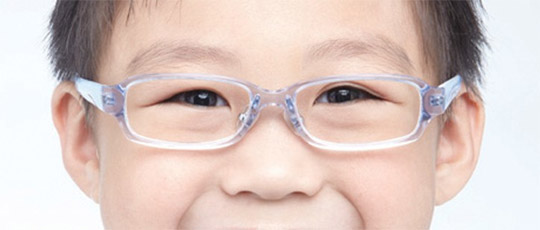What is myopia?
Otherwise known as nearsightedness, myopia is an inability to see into the distance clearly. Myopia is usually caused by a slight abnormality to the eyeball or cornea, which causes light rays to focus in front of (rather than on) the retina. Images then become fuzzy and unfocused. It often becomes apparent in childhood, although it's not unknown for myopia to develop in adulthood.Causes of myopia
It is generally accepted by experts that there are two basic causes of myopia: Genetic and environmental. If one or both parents have the condition, it is more likely that their child will also develop it. Myopia can also develop as a result of frequent close-up work and lack of outdoor activity. In the majority of cases, childhood myopia is very much the product of nature and nurture, i.e. a combination of genetic and environmental factors.How do I know if my child has myopia?
The most obvious sign of myopia is struggling to see into the distance. This can often become apparent when trying to read the blackboard at school or watching television. You may notice your child moving closer to objects to see them more clearly, for example. Headaches and eyestrain may also be a complaint when your child is looking into the distance. Regular eye examinations are crucial as these check-ups can pick up signs of myopia.Can myopia be prevented?
Genetics determine whether a child has the propensity for myopia, and as far as that's concerned there is not much we can do about our genes. However, genes are just one part of the equation.There has been some concern that watching lots of television and using computers, tablets and other technology could be responsible for rising cases of childhood myopia. Although studies have yet to confirm a strong link between childhood myopia and multimedia devices, experts advise that parents encourage children to take more breaks from these types of close work, to prevent the increasing incidence of myopia.
However, they do point to another risk factor for childhood myopia: Lack of exposure to sunlight. Research from the US, Singapore and China found that this could be a culprit and suggested that children who spend time playing outside seem less likely to develop myopia compared to peers who spend less time outdoors.
Treatment for myopia
If you're worried that your child has started to develop myopia, be sure to book an eye examination to confirm the diagnosis. If this is indeed the case, prescription glasses and contact lenses can correct sight and focus so that seeing into the distance is no longer a big issue. Depending on how advanced your child's myopia is, these may need to be worn some or all of the time.As your child gets older, corrective laser surgery is another option but this is not usually recommended until their eyes have stopped developing. The good news is that childhood myopia tends to settle down in the mid-20s and is not usually a condition that gets progressively worse with age.

